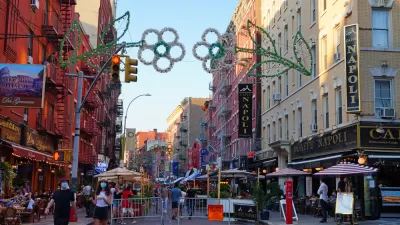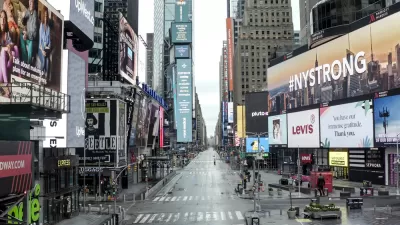Introducing the “CBGB theory of city planning.”

The work from home and hybrid work trends of the Covid-19 pandemic have persisted beyond the desires of the higher ups at Amazon, leaving Seattle’s political leaders searching for ways to bring people back downtown and replace the lost foot traffic and spending of the day-time workforce.
Seattle Mayor Bruce Harrell, for example, recently rolled out an updated “Downtown Activation Plan”—which notably lacked any mention of bringing downtown workforces back to the office in full.
Writing for PubliCola, Josh Feit has another suggestion: “Weirdos, Not Bros.”
“The first step to reviving downtown isn’t new housing, it starts with embracing the grim commercial real estate market, where vacancies recently increased from 22 percent to 24 percent,” writes Feit.
How does embracing vacancies help revitalize downtown? Like this: As commercial vacancies rise—new demand for Seattle office space fell 30% from January 2022 —rents drop. And as rents drop, the weirdos, rather than the big employers, move in. And by weirdos, I mean: creative-class, art-centric, small-scale retail. In short: The rebirth of downtown will be sparked not by Amazon, but by high vacancy rates, leading to low rents, leading to an influx of vibrant, small businesses, leading to new housing demand.
Feit calls this approach the “CBGB theory of city planning,” a reference to the famed, now extinct, nightclub on the Lower East Side of Manhattan that attracted waves of music scenes over the decades, but especially in the late 1970s, “[turning] the neighborhood into the epicenter of an urban shock wave that would change cities into magnetic destinations for brains, youth, talent, and commerce.”
More details on why Feit believes that the real estate market is already making space for Seattle’s CBGB moment can be read in the source article linked below.
FULL STORY: The CBGB Theory: Weirdos Not Bros Will Revive Downtown

Planetizen Federal Action Tracker
A weekly monitor of how Trump’s orders and actions are impacting planners and planning in America.

Maui's Vacation Rental Debate Turns Ugly
Verbal attacks, misinformation campaigns and fistfights plague a high-stakes debate to convert thousands of vacation rentals into long-term housing.

Restaurant Patios Were a Pandemic Win — Why Were They so Hard to Keep?
Social distancing requirements and changes in travel patterns prompted cities to pilot new uses for street and sidewalk space. Then it got complicated.

In California Battle of Housing vs. Environment, Housing Just Won
A new state law significantly limits the power of CEQA, an environmental review law that served as a powerful tool for blocking new development.

Boulder Eliminates Parking Minimums Citywide
Officials estimate the cost of building a single underground parking space at up to $100,000.

Orange County, Florida Adopts Largest US “Sprawl Repair” Code
The ‘Orange Code’ seeks to rectify decades of sprawl-inducing, car-oriented development.
Urban Design for Planners 1: Software Tools
This six-course series explores essential urban design concepts using open source software and equips planners with the tools they need to participate fully in the urban design process.
Planning for Universal Design
Learn the tools for implementing Universal Design in planning regulations.
Heyer Gruel & Associates PA
JM Goldson LLC
Custer County Colorado
City of Camden Redevelopment Agency
City of Astoria
Transportation Research & Education Center (TREC) at Portland State University
Jefferson Parish Government
Camden Redevelopment Agency
City of Claremont





























